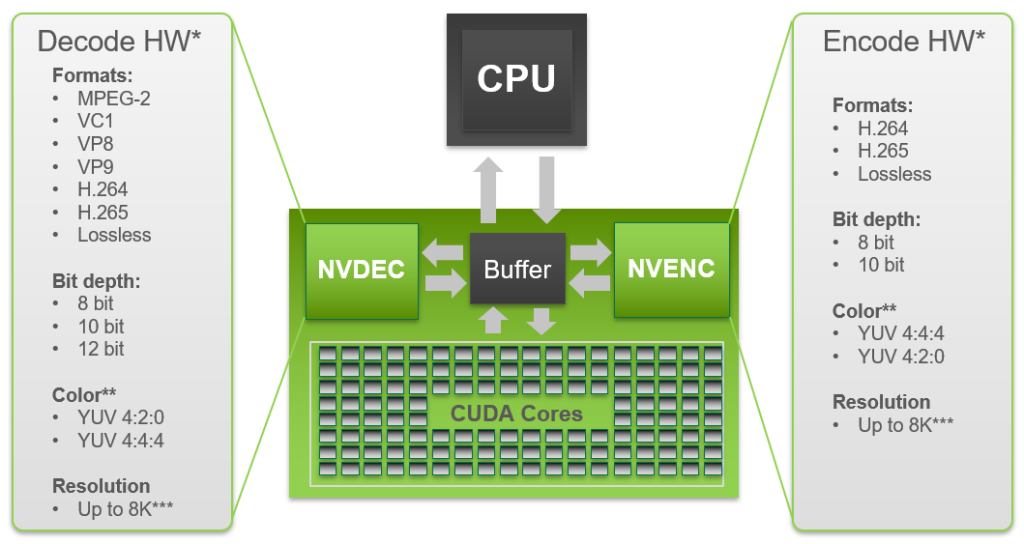Hall’s encoding/decoding model used signs to encode media text or programme’s meaning. The audience would decode the meaning in various ways, such as a TV show; people decode information in their own way and have different personal frameworks. How can this be applied to remote gaming?
GeForce Now is a cloud gaming service that allows people to play PC remotely on a variety of devices, such as GeForce Now is a cloud gaming service that allows people to play PC remotely on various devices, such as computers, phones and smart TVs. Encoding and decoding are essential to stream from GeForce Now’s server to your client-sided device, sending information in real time for the user. I will break it into two parts and explain how encoding and decoding work on GeForce Now.
:max_bytes(150000):strip_icc()/ScreenShot2020-02-04at9.02.07AM-788c47b3ddd74fe184ca70eeb7208fdf.jpg)
Encoding (Server Sided)
The game runs on a data centre, where the servers handle all of the graphics processing and rendering at a high resolution. While the game is being rendered, it is also being compressed and, at the same time, encoded into a video format to be streamed on the client’s side. The video stream transmits information through the internet, encoding the given data in high-efficiency video formats such as H.246 or HEVC (H.265). As the format is a lossy compression, the outcome on the client’s screen will not be the highest quality; GeForce Now focuses on providing low latency for the as little delay as possible due to encoding being done in real-time.
Decoding (Client Sided)
Depending on the user’s connection, an adaptive bitrate is introduced to have a lag-free gaming experience; this means that a lower resolution or frame rate will be decoded back to the user’s screen if it comes to poor conditions. Modern-day devices have hardware or software decoders built in, allowing a faster video playback time. This allows the CPU on the client-sided device to have a lower workload for a smooth session. The user playing would not have an enjoyable experience with delays.
Compared to Hall’s model, both media are consumed digitally with similar outcomes, whether the audience enjoys the experience. It is like watching TV; you want to enjoy it just like how you enjoy playing games on the cloud with minimal delay.

Semiotics
It is a form of communication through signs, language, images, gestures, sounds or objects; for example, a stop sign on the road can be seen universally, meaning drivers would all understand the meaning behind the sign. The same concept can be seen in computer games.

The Ծ symbol for GeForce Now will launch their services, preparing a cloud gaming rig session for the user; this symbol isn’t something only gamers can recognise; anyone who uses media such as YouTube will know it stands for play, such as continuing watching a paused video.
Hall’s encoding and decoding model can be applied to the modern day era, with new technologies such as GeForce Now. This example works well with Hall’s model and is very understandable as it is just video streaming built for gaming.
References:
(Nvidia Website, NVIDIA Video Codec SDK) – https://developer.nvidia.com/video-codec-sdk
(Jason R. Wilson, 2023, NVIDIA Unlocks More Video Encoding Capabilities On Its GeForce GPUs Dating Back To Maxwell) – https://wccftech.com/nvidia-unlocks-more-video-encoding-capabilities-on-its-geforce-gpus-dating-back-to-maxwell/
(Nasrullah Mambrol, 2020, Analysis of Stuart HallÔÇÖs Encoding/Decoding) – https://literariness.org/2020/11/07/analysis-of-stuart-halls-encoding-decoding/#google_vignette
(Stuart HallÔÇÖs Reception Theory) – https://media-studies.com/reception-theory/


Your blog about encoding and decoding in gaming is fascinating. It’s a great analysis of Hall’s encoding/decoding model in the context of cloud gaming! GeForce Now is an excellent example of how encoding and decoding work seamlessly in gaming. Interestingly, this mirrors media theory, as the ‘encoded’ game data must be accurately ‘decoded’ for the users to enjoy a smooth experience. The link between communication theory and technology in this blog is somewhat thought-provoking.